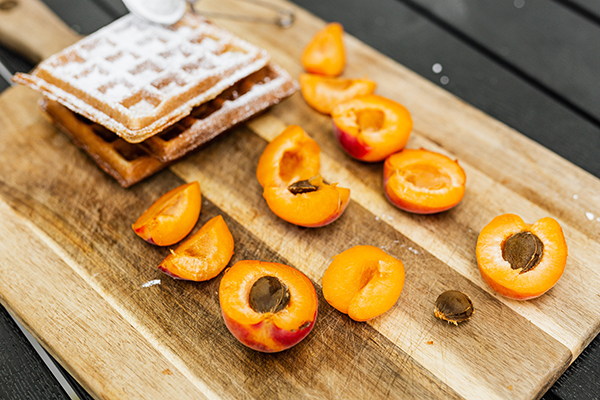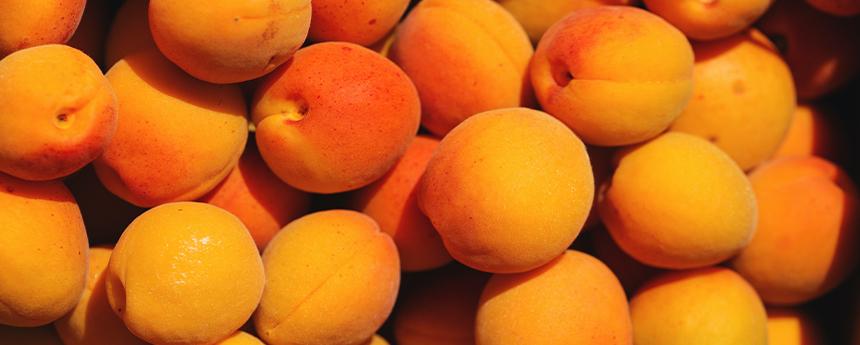- 2023-01-11
apricot cultivation
Growth habit:
Apricot is a positive tree species with strong adaptability, deep roots, light love, drought resistance, cold resistance, wind resistance, and life span of more than one hundred years. It is the main cultivated fruit tree in the hilly area of low mountains.
Cultivation technique:
colonization:
Choose sandy loam with deep soil layer and good drainage to avoid low-lying waterlogging areas. The spacing between plants and rows is 1.5 m ×4 m. The planting hole is 1 meter long x 1 meter wide x 0.8 meters deep. Apply about 10 kg of decomposed organic fertilizer to each hole. Seedlings are planted by rank at the time of colonization. Nursery stock into the hole, buried 1/3 of the soil will be lifted up, so that the root system fully stretch, and then add soil at ease. After planting, fill the dense tree hole with water and then dry it at a height of 50-1500px, leaving 4-6 full shoots under the cut. For quick-growing seedlings transplanting in winter, soil must be cultivated to prevent cold in winter at a height of 40-1250px.
Fertilizer and water:
When the new shoots grow to about 15 cm, start to apply quick-acting fertilizer, underground topdressing and foliar spraying fertilizer alternately. Organic and compound fertilizers were applied from late September to early October. After closing the shed, urea was applied before germination, potassium sulfate compound fertilizer was applied from flower to fruit expansion stage, and urea and potassium dihydrogen phosphate were sprayed for 10-15 days. In addition, 500 times increasing bacteria could be sprayed at the same time. Seedling planting after pouring a permeable water, then depending on the specific situation to determine the amount of watering and watering time.

trim:
At the end of May and the beginning of June, set dry shoot, keep 7-12 shoots with good angles, and erase the rest. When the length of new shoots reaches 40 cm, select 2-4 key cultivation, carry out "V" shape or heart-shaped pruning, and core-pluck the rest of the new shoots for 2 times, core-pluck the upright shoots on the back repeatedly, and remove too many and too dense shoots. Urea spray in early November promotes early leaf fall.
Before the fruit is expanded to maturity, core the new shoot several times to control the growth of the new shoot and improve the fruit setting rate and single fruit weight. The upright new shoot on the back can be removed or twisted to prevent the "tree growing tree" from worsening the light inside the crown. In the early and middle of May, when the fruit is collected and the film is uncovered, it retract and bind with the thinning branches to adjust the growth balance of the tree body and prevent the compensatory growth.
For young trees and first bearing trees, both shaping and bearing should be taken into account in winter pruning. The main, side and extension branches should be lightly cut long, generally leaving two-thirds of the length of the whole branch to be cut short. The growth of the medium and more open branches should be slow, so that the germination of short branches, increase the number of fruiting branches, flowers or fruit after timely shrinkage culture into fruiting branch group. Medium and short branch Angle is large, easy to flower, to try to keep. For young trees with weak growth, it is appropriate to cut them short properly, and keep more robust branches, while flatting upright and vigorous branches as auxiliary branches to promote the growth of stout and short fruit branches.
According to the growth of branches and the spatial conditions of various parts of the crown, trees in full fruiting stage should be properly denser and weaker in order to maintain stable bearing parts and growth potential. In order to recover the growth momentum, the weak main branches, lateral branches, perennial auxiliary branches, fruiting branches and pendulous branches were retracted in the parts with strong branches. Timely renewal and rejuvenation of the lower crown and the inner branches, so that the fruit tree constantly produce new and robust bearing branches.
In the aging period, the back branches of the tree with small Angle in the middle and lower part and strong growth were replaced, or the more upright branches were repulsed to promote the germination and renewal of cryptic buds. For the properly positioned bare shoots, they should be cultivated into the group of backbone shoots and fruiting shoots. In accordance with the principle of "removing weak branches and retaining strong ones", strong branches and shoots were selected for renewal and pruning. For trees that are extremely weak and difficult to renew, under the premise of strengthening the management of fertilizer and water, the main lateral branches and large branch groups in the 10-15 years old part of the whole tree can be renewed. When completed at one time, a large number of new branches can sprout in the current year. Through sprouting and core-picking in summer and shaping and pruning in winter, flowers can bear fruit in the next year, and certain yield can be restored.
management:
Such as solar greenhouse cultivation, can make apricot blossom period extended, but single flower opening time shortened, air humidity is not conducive to pollen transmission and pollination and fertilization. Therefore, measures should be taken to enhance pollination and fertilization: pollination by storage pollen points; Dust with a feather duster; The height of the hive is close to the middle and upper part of the crown, so that the bees will encounter the flowers as soon as they come out of the hive.




















